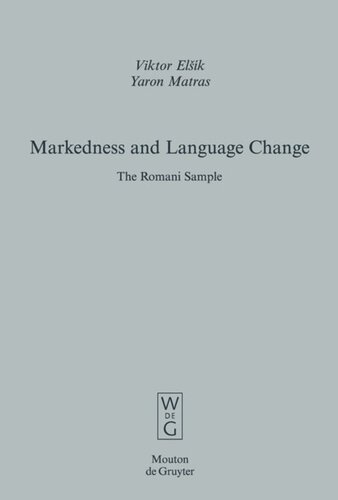

Most ebook files are in PDF format, so you can easily read them using various software such as Foxit Reader or directly on the Google Chrome browser.
Some ebook files are released by publishers in other formats such as .awz, .mobi, .epub, .fb2, etc. You may need to install specific software to read these formats on mobile/PC, such as Calibre.
Please read the tutorial at this link: https://ebookbell.com/faq
We offer FREE conversion to the popular formats you request; however, this may take some time. Therefore, right after payment, please email us, and we will try to provide the service as quickly as possible.
For some exceptional file formats or broken links (if any), please refrain from opening any disputes. Instead, email us first, and we will try to assist within a maximum of 6 hours.
EbookBell Team

4.7
46 reviews'Markedness' is a central notion in linguistic theory. This book is the first to provide a comprehensive survey of markedness relations across various grammatical categories, in a sample of closely-related speech varieties. It is based on a sample of over 100 dialects of Romani, collected and processed via the Romani Morpho-Syntax (RMS) Database - a comparative grammatical outline in electronic form, constructed by the authors between 2000-2004. Romani dialects provide an exciting sample of language change phenomena: they are oral languages, which have been separated and dispersed from some six centuries, and are strongly shaped by the influence of diverse contact languages.
The book takes a typological approach to markedness, viewing it as a hierarchy among values that is conditioned by conceptual and cognitive universals. But it introduces a functional-pragmatic notion of markedness, as a grammaticalised strategy employed in order to priositise information. In what is referred to as 'dynamic', such prioritisation is influenced by an interplay of factors: the values within a category and the conceptual notions that they represent, the grammatical structure onto which the category values are mapped, and the kind of strategy that is applied in order to prioritise certain value. Consequently, the book contains a thorough survey of some 20 categories (e.g Person, Number, Gender, and so on) and their formal representation in various grammatical structures across the sample. The various accepted criteria for markedness (e.g. Complexity, Differentiation, Erosion, and so on) are examined systematically in relation to the values of each and every category, for each relevant structure. The outcome is a novel picture of how different markedness criteria may cluster for certain categories, giving a concrete reality to the hitherto rather vague notion of markedness. Borrowing and its relation to markedness is also examined, offering new insights into the motivations behind contact-induced change.